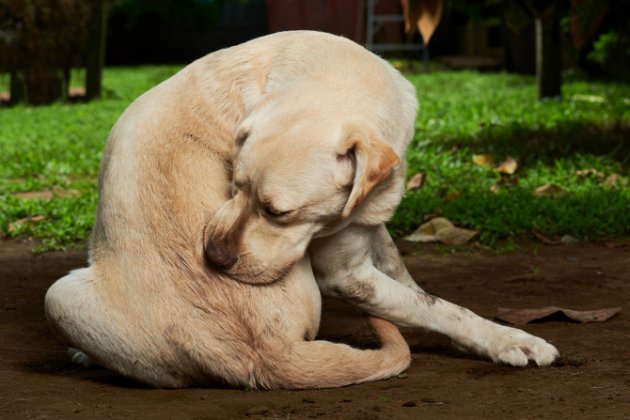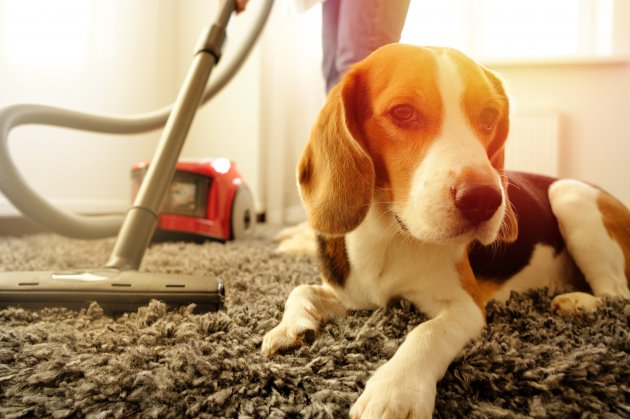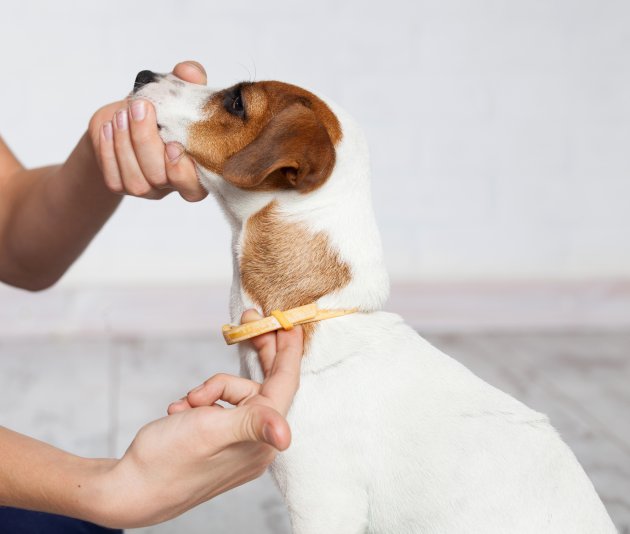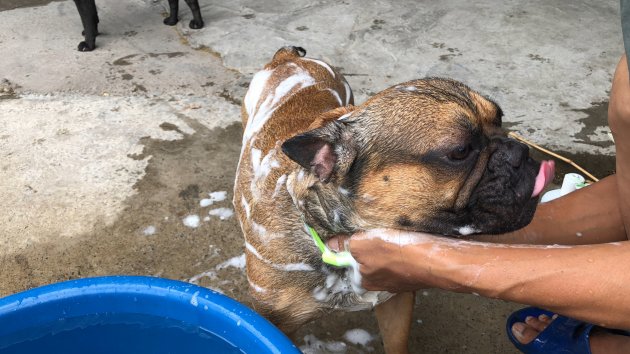Most pet owners have experienced flea problems first hand or at least heard horror stories about them. Fleas can wreak havoc in your house especially if your pet is always indoors; they bug and bite your pet in addition to your family members, which is why they are miserable pests.
Fleas are prevalent in warm weather, and if not controlled, they can cause bigger problems in your pets like skin conditions and irritation or they may become ill from too much infestation. There are several ways to control fleas in your home to keep your family and pets safe in case of a flea infestation.
Signs of flea infestation
Fleas are not always easy to find since they are buried deep down in your pet's fur. If your pet is constantly scratching, licking and biting its fur, it could be a sign of a flea infestation and is worth checking out. Also, you may notice some fleas hopping on your carpet, rug or the pet's bedding. These are the apparent signs of a flea infestation. The best way to check for fleas in your dogs or cats is to look for flea dirt or feces. Make your dog or cat lie down on a white towel, then comb or rub a section of fur in your dog or cat's coat.

If black flecks appear on the white towel, then it could be a sign of flea infestation in your pets. You can also confirm if it’s flea dirt by sprinkling some water on the black flecks; if they turn red, then it's official, you have a flea infestation in your house. The red color is a result of blood passed in the waste matter, this step is important in distinguishing regular dirt from flea dirt.
Preventing fleas
There are many ways you can prevent and treat a flea infestation; it can either be natural or chemical ways. We prefer flea prevention because the inconvenience and costs of dealing with an established flea infestation are far worse than that of preventing a flea infestation. In this case, prevention is cheaper and easier than the actual treatment.
Keep your home clean
The first line of defense when preventing a flea infestation is to keep your home clean, that's the least you can do. Having fleas in your home doesn't mean that your house is dirty; you only need to pay special attention to certain areas.
For starters, vacuum the carpet or floor rug as the three stages (egg, larvae, and pupae) in the life cycle of a flea live in the carpet or rug. Fleas tend to avoid high traffic pathways and areas in your house. So, don't just vacuum the normal places every day, be sure to hit under the cushions, beneath furniture and baseboards or anywhere your dog frequents. You should do the vacuuming at least once a week, and it helps eliminate 50% of fleas.

To successfully get rid of fleas in your home and yard, you can opt for a steam cleaner that is eco-friendly and safe to use. The steamers kill fleas by burning and drowning them. An adult flea dies when the temperature exceeds 95 degrees Fahrenheit, and the steamers can produce steam at temperatures of 120 degrees Fahrenheit, so it kills the eggs, larvae and adult fleas.
Also, if you have a yard, keep the grass short and trim the shrubs. It helps prevent other animals like mice, rats, stray dogs and cats from crawling into your yard with fleas. Cutting and trimming your shrubs helps to improve air circulation and with the penetration of sunlight, soit helps kill flea larvae and pupae.
Natural ways of flea prevention
To fully prevent an infestation, you need to stop fleas from reproducing. Fleas lay many eggs at once; it is believed that a female flea lays up to 50 eggs at once, and they have a lifespan of 100 days. In the blink of an eye, you have 51 fleas in your home, and we don't even know the number of egg laying female fleas. For starters, if you have an indoor pet, try vacuuming your carpet, pet bedding or beneath the furniture, since those places contain the highest number of flea larvae.
Also, check for flea infestation outdoors, specifically in protected and shady areas where your dog frequents. At the first signs of an infestation, try the following natural methods and treatments before resorting to chemical use. It is worth noting that some natural treatments can have adverse effects on your pets, that’s why you need to consult your local vet before applying any of these natural treatments on your pet.
Use a flea comb
Only use combs specifically branded as flea combs, as they help lift the fleas out from your dog's fur. Flea combs are fine-toothed in design and this feature makes them effective for finding and removing fleas from furry pets when compared to normal combs. Make sure the flea comb contacts the skin during combing; otherwise, you risk leaving some fleas behind to reproduce once again. Alternatively, dip the flea comb in a mixture of soap and warm water and use it to comb your dog, this concoction will kill and lift off the fleas.
Another thing, comb your dog outside the house, the last thing you want is fleas jumping off their fur and landing on your carpet to start the life cycle once again and this makes it a recurring problem. Also, combing your dog outside gets rid of flea eggs in the house.
Essential oils
Essential oils like thyme, eucalyptus, and lavender (just to name a few) have natural chemical elements that help repel fleas. Besides, they help soothe the flea bites, so the skin will be free from irritation if your dog is constantly scratching itself. You only need to apply a small amount on your dog. Wash your dog with liquid soap and warm water, and then dry with a towel. Apply the essential oil in select places where fleas are prevalent, like the neck region and the base of the tail. Using your hand, massage the essential oil into the skin.

DIY Home Remedies
You can prepare these solutions at home before giving them to your dog. These home remedies work well in repelling fleas from your pets in small to moderate infestations.
Rosemary flea dip
Prepare a rosemary flea dip by adding 2 cups of rosemary in water and boil it for 30 minutes, the water should cover the rosemary leaves when boiling. Strain the liquid and add some water, depending on the size of your dog. Let the solution cool slightly so that it doesn't burn your pet. Soak your dog with this rosemary flea dip, drenching them completely and leave them to dry. Rosemary produces a fragrance that acts like a flea repellant, and it helps keep the fleas away from your pets and home.
Rubbing lemon juice
Experts recommend rubbing undiluted lemon juice on your dog's coat to kill the fleas, but make sure the lemon juice is in contact with the fleas and it doesn't just sit on the coat. Using a spray bottle, mix lemon juice and warm water in equal parts and spray it on the dog's coat before rubbing it in.
Alternatively, if you can't access lemon juice, you can prepare this mixture by cutting a lemon into quarters and boiling it in some water before leaving the mixture for about 8 hours. Spray this mixture on the dog using a spray bottle. Repeat this process once every three days for the best results.
Oral Treatments
Apple cider vinegar
Apple cider is a natural flea repellant, and it can be given to your dog orally or applied topically. What you need to do is to mix one tablespoon of apple cider vinegar solution in your dog's drinking water. Over time, this solution seeps in your pet's skin making it acidic, and it helps to repel the fleas. The frequency of application depends on the flea infestation, but experts recommend using it once every two days for the best results.
You can also use this solution topically on your dog, mix an equal part of apple cider vinegar with warm water in a spray bottle. Completely wet your dog with this solution giving special focus to flea prone areas like under the legs, behind the ears and the tail base.
Brewer's yeast
It is an effective supplement that helps repel fleas from your pet, plus it is non-toxic. You only need to add one teaspoon of the brewer's yeast solution to the dog's food. Experts recommend one teaspoon of this yeast for every 30 pounds in dog weight. Also, give your dog about 50mg of vitamin B complex daily in addition to the yeast for effective results.
Sticky traps
A sticky pad is an electronic trap that you have to plug-in before placing it in a flea-infested area. The sticky traps produce low-frequency light and vibrations which attract fleas to them, and they end up getting caught in the sticky pads. It is effective for a small flea infestation. However, it takes longer to fully eradicate fleas, plus they appear unsanitary when used for very long.
Pet-friendly Chemical Treatment
There are some instances where no matter how hard you try to use these preventive measures, fleas take control of your house; especially if the infestation is already established. To save your family members and pets from discomfort, you need to remedy the situation quickly by using potent chemicals that are safe for pets and kill fleas instantly. However, consult with your vet before using any chemical on your pet as some chemicals are known to cause adverse side effects on pets. It is also important to read the instruction label on the chemical product when applying it on your pet. Try the following chemical treatments;
Flea collars
Flea collars are becoming the most accessible and popular flea control option due to their ease of use and low cost. So, how does a flea collar work? A flea collar works by releasing a toxic substance or gas that kills and repels fleas. Most users think that the flea collars only kill fleas that are close to it. It couldn't be further from the truth, as these toxic substances are specially formulated so that they penetrate and dissolve in the skin's fatty layers killing the fleas anywhere on the dog's body. Flea collars contain ingredients that have a half-life of 8 months once they are dissolved in the fatty tissues.

Some of these ingredients are very effective and they kill fleas through contact, and it reduces skin scratching and irritation in your canine companion. However, you only need to take a few precautions before committing to buy a flea collar. One, it shouldn't be too tight; a tight flea collar can choke your cat to death when it becomes tangled on tree branches. Secondly, it should be elastic to minimize skin damage and fur loss. Go for flea collars with quick-release elastic catches so that your pets can free themselves if they get entangled.
Wash your dog with shampoo
Bathing your dog with shampoo or mild liquid soap and warm water kills most of the fleas, but it is only recommended for mild to moderate flea infestations since it is not potent enough for a large flea infestation. It should be done at least once every three days. Liquid soap is effective in destroying the flea's cell membrane by removing its protective wax layer, leaving the flea to die from cell dehydration. Also, soap lifts off the fleas by trapping them, that's why you should fully lather soap on the dog or cat.

Flea sprays
Flea sprays work by killing the eggs and larvae in the flea life cycle, so don't expect it to work immediately by killing adult fleas. Most flea sprays contain boric acid; which when sprayed on your carpet or rug, desiccates the egg and larvae killing them instantly. By eliminating these two stages, the number of fleas in your home reduces over time due to a broken life cycle. No matter how many eggs are laid, none of them will see the light of day. Flea stoppers cannot be used to kill the pupae stage, as it is protected by a tough cocoon and the chemicals won't penetrate it.
Oral medication
Oral flea medications usually come in the form of chewable pills and are transmitted to the flea when it bites your pet. These medications contain various active compounds in their ingredients that kill the fleas in a matter of minutes, you’ll watch the fleas fall off your pet after some time. These active ingredients are FDA approved, and the most common are;
Spinosad – This active ingredient kills the fleas by over-stimulating its nervous system. It is only effective on adult fleas. Though, it is not recommended for use in epileptic dogs.
Lufenuron – It works by killing the flea’s larvae by reducing the viability of the eggs, and it is FDA approved.
Nitenpyram – It is fast-acting, and it kills fleas in less than 30 minutes. We highly recommend this chemical as a preventative measure if you are traveling to flea prone areas with your pets.
N/B Always consult with your local vet before using any of these oral medications, as some of them could have adverse side effects on your dog.
Topical applications
Topical flea applications work by killing and repelling fleas, and they are usually applied on the pet’s shoulder blades where your pet can’t lick this formulation. Always consult your local vet before using any of these active ingredients on your dog or cat as some can cause adverse side effects. Most topical formulations last a month and contain some of these active ingredients below.
Pyrethroids –This formulation works by killing the fleas instantly when ingested, and is popular with eco-friendly pet owners because they are derived from natural pyrethrum flowers. Though, some manufacturers came up with synthetic pyrethroids that are more effective and stable than naturally occurring pyrethroids. Don’t use pyrethroids on cats as it can be toxic to some breeds.
Imidacloprid – This chemical disrupts the flea’s nervous system when ingested, killing both the flea larvae and adults.
Fipronil – Over time, this chemical dissolves in your pet’s fatty tissues and kills fleas by disrupting their nervous system eventually killing it. This chemical has a half-life of one month and its FDA and EPA approved for use.
Flea & Tick Powder
This powder is lethal when ingested by fleas and ticks, as long as it remains on your pet’s fur. All the fleas will die in a matter of days; the first sign you’ll see is that the fleas will start rising from the fur. We highly recommend using this powder on dogs rather than cats, because cats will lick their fur and ingest this powder in large amounts, and it may result in breathing difficulties. Also, follow the instructions on the package and consult with your local vet if you have any questions.
Foggers and Flea Bombs
You should also try using flea bombs, which is an effective way of reaching and killing flea eggs and larvae that have penetrated the carpet fibers. If you don’t know how to fog your carpet well, reach out to professionals who can get the job done. The chemical residue left on the surface of your carpet or couch can harm your family members leading to complications, so you need to follow the instructions on the label when using flea bombs.
Insect growth regulators
When an insect ingests an insect growth regulator, it renders them unable to lay viable eggs, and it reduces the flea population drastically. Most insect growth regulators contain Methoprene which helps kill adult fleas. You mix the IGR with water and then spray on the rugs and carpet. A good example is Nylar.

Wrapping up
A flea infestation is one of the worst epidemics your pet and family members could have to endure. Fortunately, there are many natural and chemical ways to remedy this problem. Try using the preventive measures listed above, and if the problem persists, it’s time you use chemical means that are potent enough to clear a heavy flea infestation. This article is for reference purposes only, and you need to seek advice and prescription from a qualified vet before commencing any chemical treatment on your pet. Also, read the manufacturer’s instructions carefully since the formulation might be specific to a certain pet; for example, a dog-specific formulation might be harmful to your cat and vice versa. Hopefully, you'll never have to experience another flea infestation again if you follow our recommendations.